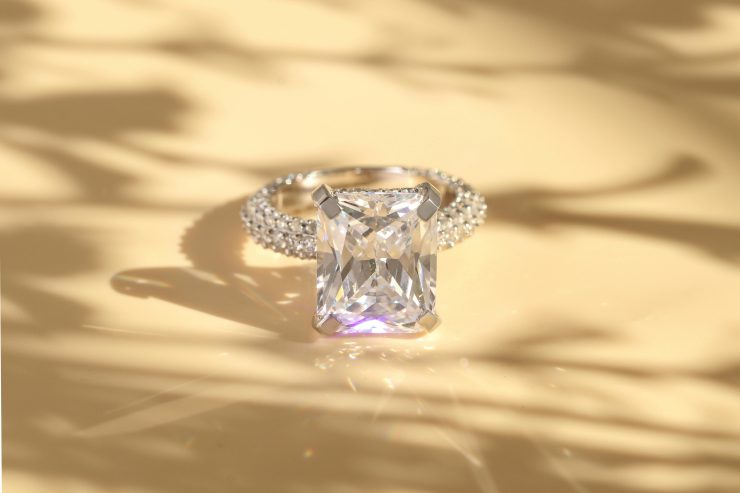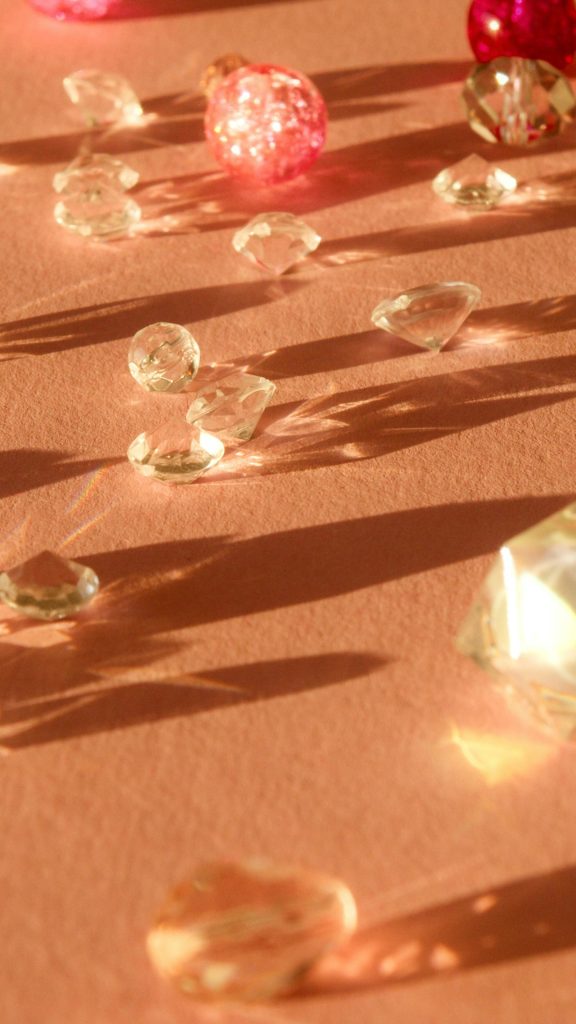The category of synthetic gemstones encompasses a wide array of man-made stones designed to replicate the visual and sometimes structural properties of natural gems. These stones are created in controlled laboratory environments, typically using advanced technological processes such as high-pressure, high-temperature (HPHT) methods or chemical vapor deposition (CVD). While all synthetic gemstones are created artificially, not all are the same in terms of composition, durability, optical performance, or market value. Lab-grown diamonds, moissanite, and cubic zirconia are three of the most common synthetic options used in jewelry, but they differ significantly in their chemical structure and properties. These differences influence not only their appearance and pricing but also their longevity and resale potential. Understanding these distinctions is essential for consumers who are considering alternative gemstones, especially when shopping for engagement rings or investment-grade jewelry. This article delves into each type with the intent to provide a clear, unbiased comparison.

Lab-Grown Diamonds: Structure, Appearance, and Value
Lab-grown diamonds are chemically, physically, and optically identical to natural diamonds. They are formed using carbon atoms arranged in the same crystalline structure as natural diamonds. The two main methods used in their production—HPHT and CVD—mimic the conditions under which natural diamonds are formed beneath the Earth’s surface. The result is a stone that matches natural diamonds in hardness (a perfect 10 on the Mohs scale), refractive index, and brilliance. Lab diamonds can even come with certifications from the same gemological institutions, such as the Gemological Institute of America (GIA), that grade natural diamonds. However, one major difference lies in pricing: lab diamonds are generally 30–50% less expensive than their mined counterparts, depending on quality and market conditions. In terms of long-term value, lab diamonds typically have lower resale values than natural diamonds, largely due to their abundance and the perception of them being more “replaceable.” Nevertheless, for many consumers, especially those with ethical or environmental concerns, lab diamonds offer an attractive alternative that combines authenticity with affordability.
Moissanite: Silicon Carbide and Optical Brilliance
Moissanite is another popular synthetic gemstone that is frequently compared to diamonds, although it is composed of silicon carbide rather than carbon. Naturally occurring moissanite is exceedingly rare, so virtually all moissanite on the market is lab-created. Its hardness ranks at 9.25 on the Mohs scale, making it very durable and suitable for everyday wear. One of moissanite’s most distinguishing features is its extraordinary brilliance; it has a higher refractive index than diamond (approximately 2.65–2.69 versus 2.42), resulting in a fire and sparkle that is often described as more colorful or “disco ball-like” in certain lighting. While this brilliance is visually impressive, it can also be a giveaway to trained eyes that the stone is not a diamond. Moissanite is also significantly less expensive than both natural and lab-grown diamonds, making it an appealing choice for budget-conscious buyers. However, it does not replicate the exact look of a diamond due to its distinctive optical properties. This makes it a personal choice—preferred by some for its vibrant sparkle but avoided by others who want a closer diamond imitation.
Cubic Zirconia: The Most Affordable Diamond Simulant
Cubic zirconia (CZ) is perhaps the most well-known diamond simulant due to its widespread availability and exceptionally low cost. Unlike lab-grown diamonds or moissanite, cubic zirconia is not even remotely similar to diamond in terms of chemical composition. It is made from zirconium dioxide and is a completely synthetic material without any natural analog suitable for jewelry purposes. CZ has a Mohs hardness of around 8 to 8.5, which is considerably lower than both diamonds and moissanite, making it more susceptible to scratching and dulling over time. In terms of optical performance, CZ has a higher dispersion rate than diamond, which results in more rainbow-colored flashes of light. Initially, a well-cut CZ can be visually striking and closely resemble a diamond to the untrained eye, but over time, its tendency to cloud, chip, or lose luster can become apparent. While CZ is an excellent choice for costume jewelry or temporary replacements, it is generally not considered suitable for long-term or heirloom-quality jewelry due to its limited durability and complete lack of resale value.

Other Synthetic Alternatives: YAG, GGG, and Glass Imitations
Beyond the mainstream options like lab diamonds, moissanite, and cubic zirconia, there are several lesser-known synthetic gemstones that occasionally enter the market. These include yttrium aluminum garnet (YAG) and gadolinium gallium garnet (GGG), which were more popular in the mid-20th century as diamond substitutes before moissanite and lab-grown diamonds became widely available. YAG and GGG are relatively hard and can mimic the appearance of diamond to some extent, but they lack the fire, brilliance, and longevity expected in high-quality jewelry stones. Another low-tier category includes glass imitations and rhinestones, which are mostly used in costume jewelry. These materials are highly fragile and visually inferior, offering neither the sparkle nor the durability of true gemstone simulants. Such options are generally limited to novelty or fashion uses and are unsuitable for engagement rings or daily wear. While they may serve a decorative purpose, they provide no long-term value and cannot withstand even moderate abrasion or impact, making them impractical for most serious jewelry buyers.
Key Comparisons: Durability, Appearance, and Cost
When comparing all these synthetic options side-by-side, lab-grown diamonds consistently emerge as the closest analog to natural diamonds in every measurable sense. They share the same hardness, structure, brilliance, and certification potential. Moissanite follows as a strong second, with impressive durability and brilliance, but it diverges more noticeably in optical characteristics. Cubic zirconia and other synthetics fall short in both appearance and wearability, with lower resistance to scratching and visual clues that distinguish them from diamonds. In terms of cost, cubic zirconia is by far the most affordable, often costing less than $50 for a large stone. Moissanite typically ranges between $300–$600 per carat depending on quality, while lab-grown diamonds may range from $1,000 to $5,000 per carat, depending on cut, clarity, color, and certification. Each of these simulants serves a different purpose, and the right choice depends largely on the buyer’s priorities—whether those be authenticity, appearance, budget, or ethical sourcing.
Conclusion: Choosing the Right Synthetic for Your Needs
Choosing between lab diamonds, moissanite, cubic zirconia, and other synthetic options involves more than simply finding the one that looks most like a diamond. The decision should be informed by multiple factors including budget, lifestyle, long-term value, and ethical considerations. For individuals looking for a stone that is virtually indistinguishable from a natural diamond in all respects, lab-grown diamonds are the most faithful choice. For those who value brilliance and affordability over authenticity, moissanite offers a dazzling alternative that is both durable and beautiful. Cubic zirconia and other lesser synthetics may work for temporary or casual uses but are unlikely to satisfy buyers looking for heirloom-quality or engagement-grade stones. Understanding the science, economics, and visual distinctions of each option enables consumers to make informed decisions that align with their personal preferences and financial capabilities.